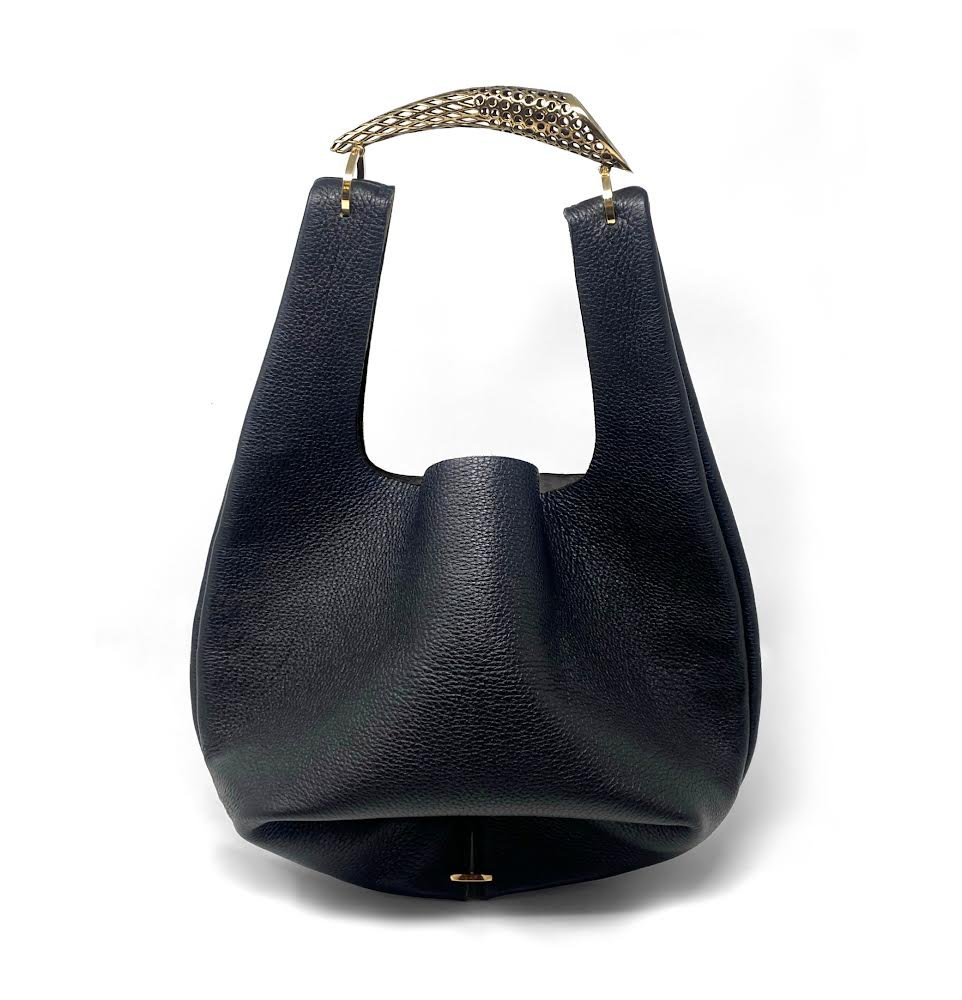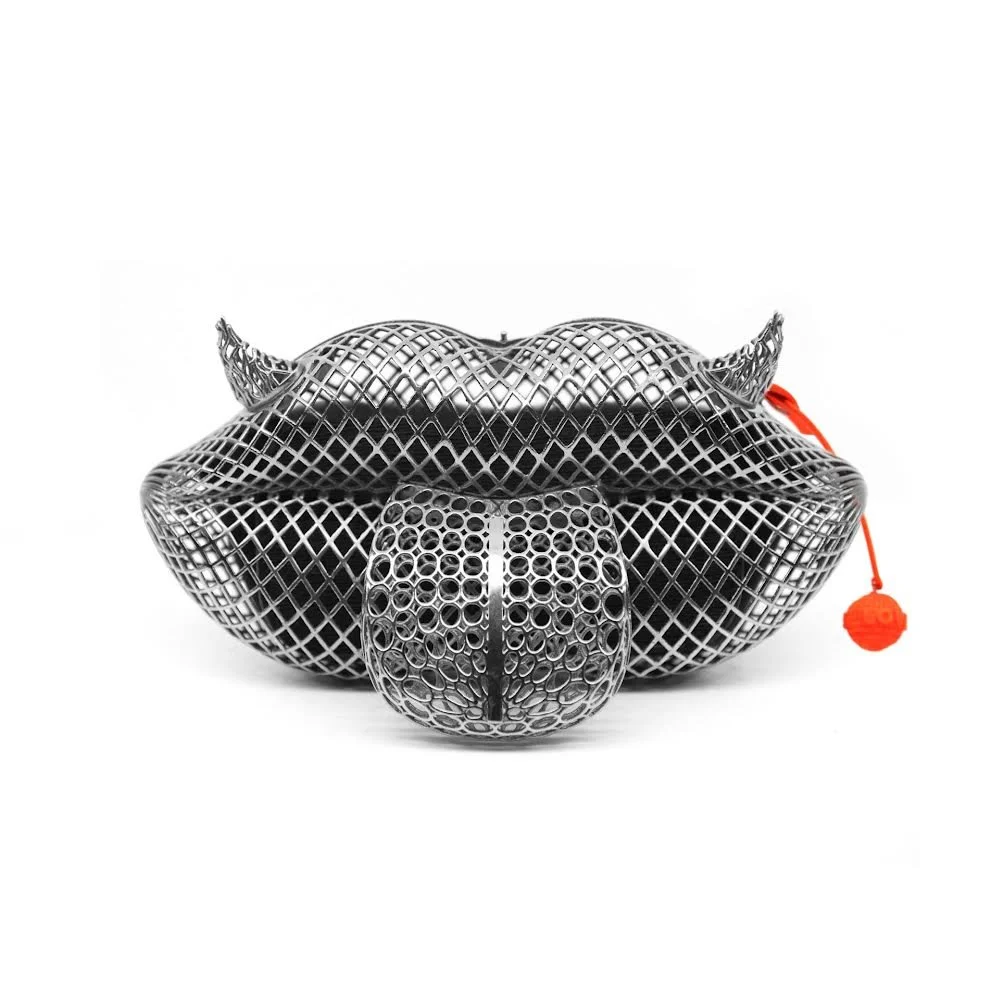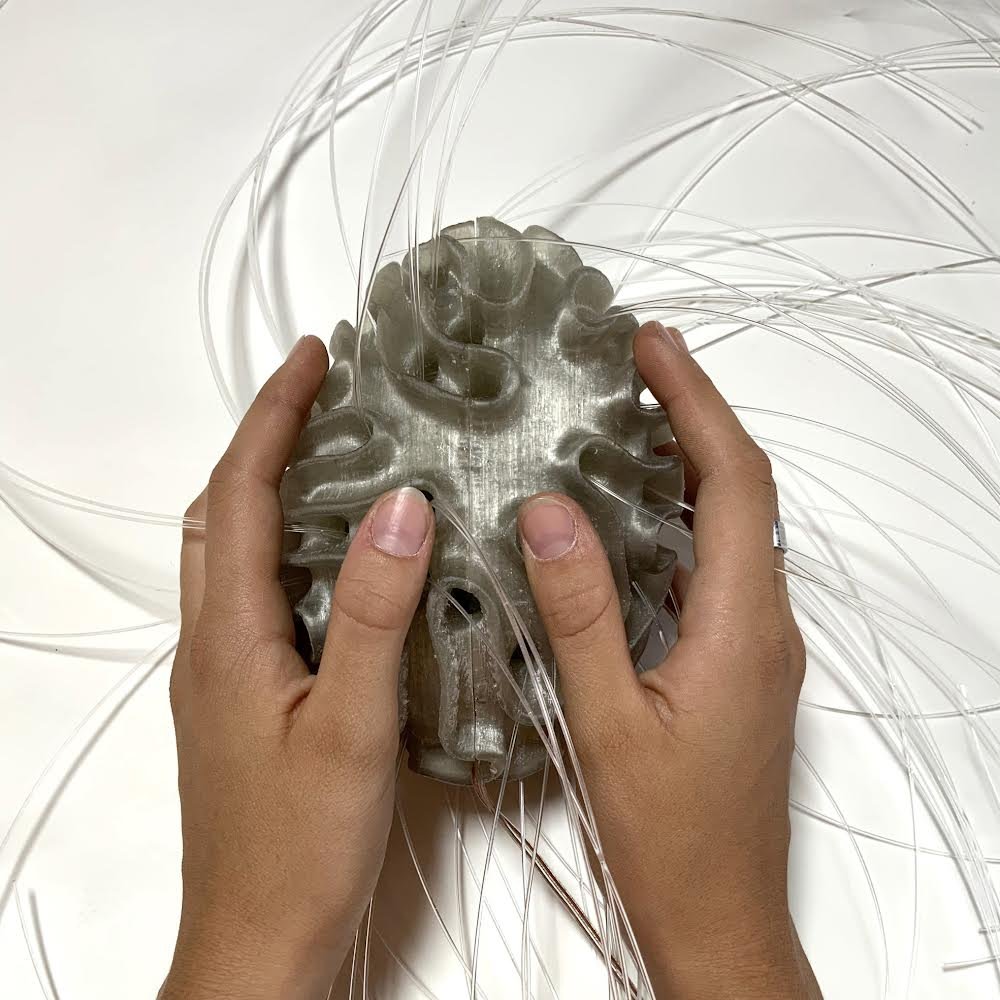A Manifesto to Ecodesign: A Talk with Giulia Ber Tacchini
In the realm of luxury fashion, Giulia Ber Tacchini emerges as a pioneer of sustainable design. Born in Modena, Italy, Giulia is a fashion designer and consultant from prominent brands like Schiaparelli, Dior, Prada, and Chloé. In her studio, she and her team employ ecodesign methodologies by merging the rich heritage of craftsmanship with cutting-edge technology to create brand-new accessories and redesign bestselling items.
MAISSA: Where Tradition Meets Innovation
In 2017, Giulia launched her brand MAISSA, epitomizing her commitment to sustainability and innovation. In 2017, Giulia launched her brand, MAISSA, epitomizing her commitment to sustainability and innovation. Translating to “shining star” in Arabic, MAISSA’s aesthetic is inspired by primitive art, pop icons, and nature, all infused with futuristic, high-tech elements. The brand marries innovative materials with Italian craftsmanship, leveraging 3D rendering and printing technologies. Furthermore, a key focus of Giulia's work is on the functional durability of her products, aiming to extend their lifespan through both the physical attributes of the materials and their emotional resonance.
This unique approach allows MAISSA to eliminate unsold inventory, minimize material waste and energy consumption, and unlock infinite design opportunities such as three-dimensional mesh, parametric structures, and kinetic elements. This technology also enables each product to be customizable, enhancing its uniqueness.
One notable example is the "Saddle bag," crafted from vegetable-tanned, biodegradable leather, water-based glue, and cotton stitching. Designed for easy disassembly, the bag features removable and recyclable metal hardware. Similarly, the "Metal clutch" is a 3D-printed sculpture made from galvanized brass with handcrafted finishes, fully customizable and recyclable. Despite the futuristic look, these products come from the present and represent the new frontier of ecodesign.
Ecodesign: a new discipline
But what does "ecodesign" mean? According to the European Commission, Ecodesign is a discipline aiming to benefit businesses, consumers, and the environment. The ESPR (Ecodesign for Sustainable Products Regulation) provides guidelines and product requirements, emphasizing 16 key aspects, including waste material generation, water and energy use efficiency, durability, reparability, and recyclability.
In fashion, ecodesigning, unlike traditional designing, considers environmental aspects at every stage of the development process, aiming to create products with the lowest possible environmental impact. Ecodesigners have to assess their creations' desired outcomes comprehensively, balancing aesthetic appeal with ecological responsibility. Giulia employs Life Cycle Assessment (LCA) tools and other science-based approaches to measure her designs' environmental and social impacts.
“Knitting the Future”
Other remarkable projects showcasing Giulia’s innovative spirit, include "Knitting the Future", a project in collaboration with The Woolmark Company, D-house Laboratorio Urbano, Südwolle Group, and Stratasys. The "Parametric bags" are made from an innovative yarn combining Merino wool and Grilon, utilizing a low-waste technology that knits the exact net surface of the bag in a single piece. This method results in minimal waste and maximum efficiency. The bags are transformable, adaptable to different uses, and designed for easy assembly and repair, enhancing their durability and sustainability.
The Solaris Community
Lastly, in 2021, Giulia joined the Solaris Community, a Swedish circular supply-chain platform initiated by the United Nations. Collaborating with renowned designers like Karim Rashid and Iris Van Herpen, this platform explores innovative solutions for repurposing waste streams into premium materials and products, fostering a sustainable circular economy model.
Through her work with Solaris, Giulia has contributed to global efforts addressing environmental challenges. One of her most notable projects within the community is "Coral Pulse." This art installation, made entirely of 100% recycled ocean plastic, evokes marine creatures and their efforts to create beauty and emotion through light. The spherical and oval elements represent coral shapes, while the optical fibers inside them reflect jellyfish, plankton, and the vibrant colors of coral reefs. "Coral Pulse" explores the contrast between light and darkness, fear and fascination, highlighting the plight of coral reefs threatened by ocean plastic pollution.
Conclusion
Giulia Ber Tacchini's journey is a testament to the power of renovation. As a pioneer in accessories ecodesign, she has crafted a new aesthetic language that marries sustainability with beauty. By integrating advanced technologies with craftsmen’s heritage, Giulia redefines the design industry, proving that fashion and environmental responsibility can coexist harmoniously. Her collections continue to shape the future of fashion, designing pieces that are made to last.






